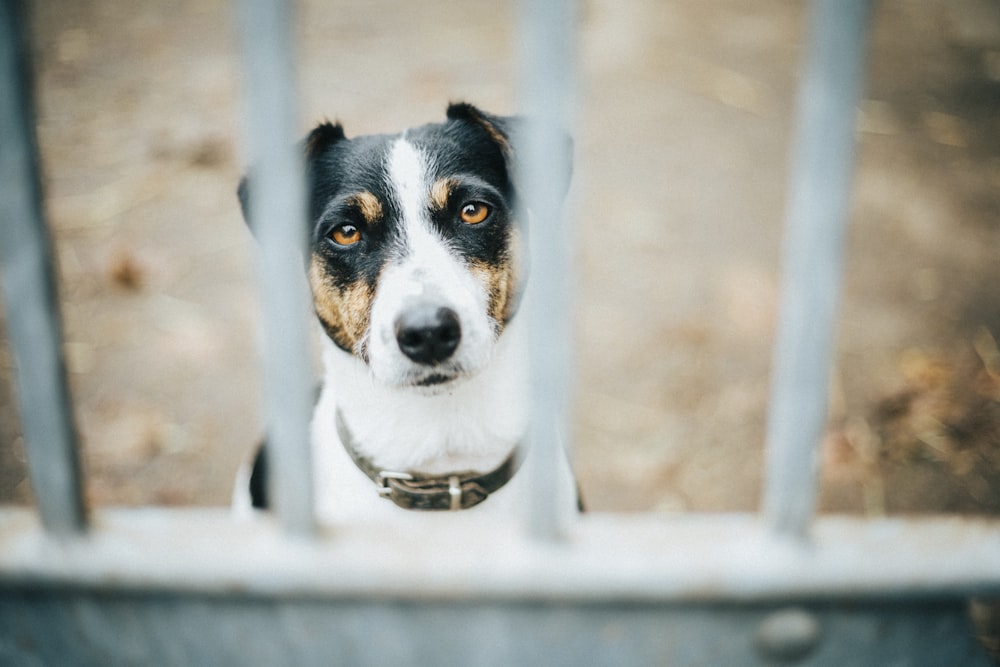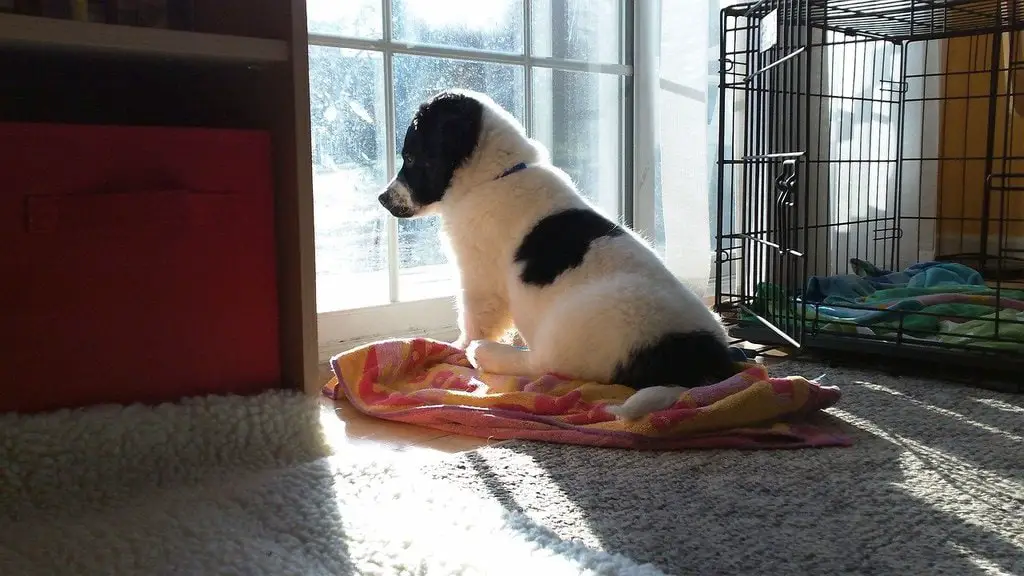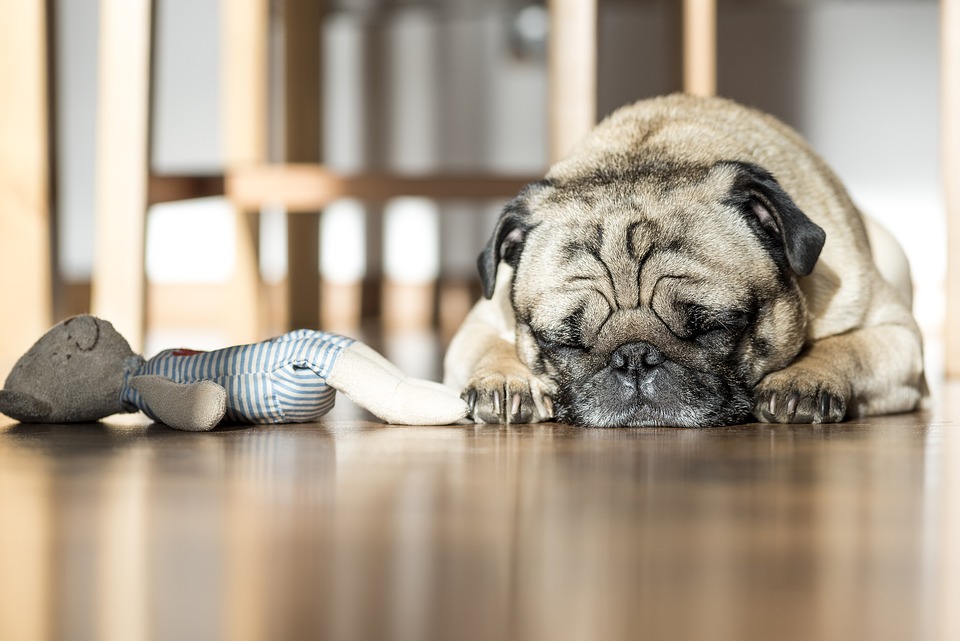Your new puppy will likely consume much of your time and energy, and you may want to be with them all the time. Still, for most pet owners, there will be times when you need to leave your dog at home, and it’s important that you teach this skill from the outset.
You can leave your dog alone for 12 hours if they have been taught to be happy alone, their basic needs are met, and they are not bored or afraid. You need to consider the age and temperament of your pet, as well as whether they will be left indoors or outdoors, before deciding if they can manage 12 hours alone.
In this article, we’ll explore what the experts say about teaching your pet to be confident when left alone and how to prevent any anxiety this could cause. We’ll also consider ideal conditions for leaving your pet alone.
Teaching Your Puppy to Be Alone
Dogs are naturally social animals and, given the choice, will want to be with you all the time. However, that is not always possible, and it’s therefore important to teach your dog the skills to stay alone happily for periods of time.
It’s easiest to teach this from puppy stages because, as we all know, it’s hard to teach an old dog new tricks. You must do this gradually so that your dog does not feel abandoned when you leave the house. Follow these guidelines to help teach your dog to be alone.
Start Slowly
If your puppy is crate-trained, you should start by leaving them in the crate or another confined area while you are still in the house (source).
It would help if you created positive associations with the confined area so that your dog doesn’t think it’s a punishment. You could feed them there and play with them there if it is big enough to build positive associations.
Teach Your Puppy to Be Alone
At first, you should leave your puppy for very short periods and reward them when they don’t follow you to the exit. The trick to getting this right is to ensure, from the start, that being alone is fun and not stressful (source).
Start by leaving your pup with a toy in a confined area, and stay away for increasingly long periods of time. Check on them regularly and reward them with calm praise and a treat if they are content.
If your puppy is crying in the confinement area, don’t immediately let them out because that will teach them that crying results in what they want. Rather, shorten the times they are left alone and build up to longer times more gradually.
Once they have mastered being happily alone in a confined space, and are potty trained, then you can give them a free run of the house or garden when they are alone.
Make It Fun
Your puppy needs something constructive to do while in the confined area. Chew toys, especially those that have food inside them, are particularly good for this purpose. This also helps to ensure your pet doesn’t chew your furniture or plants!
You could leave a radio or TV on so that there is ambient noise and your pup feels less alone.
Inside or Outside?
Many dogs are very happy and confident left in the yard while their owners are at work. Getting your dog used to this will require the same approach as getting them used to being left inside, and you’ll also need to consider a few safety issues.
Some breeds are more capable of being left outside, and some dog temperaments lend themselves more easily to this. Small or toy breed dogs should not be left outside, but most others will manage fine if they are accustomed to it.
You’ll need to ensure your dog cannot escape your property. Bored dogs can be very creative escape artists and have been known to jump fences, burrow beneath them, or chew their way through them. You may wish to ensure your dog is microchipped so that if they do manage to escape, they can be more easily located.
You also need to be aware of your dog’s behavior while you are away and be considerate to neighbors if your dog is unreasonably barking or whining in your absence.
The weather is an important consideration, and your dog needs to be adequately protected from very hot or very cold weather conditions. Suitable shelter is essential, as well as a clean water supply. A heating pad may be necessary for your dog’s kennel in extremely cold conditions.
If your dog will spend alone time outdoors, make sure that you are spending enough time with them when you are home and that they get enough exercise and stimulation so that they aren’t bored when left at home.
Other Factors to Consider
Not all dogs can be left alone for long periods of time, and you should consider the following before concluding whether your dog can be left unattended for 12 hours.
Bladder Control
This can be a factor of age — very young and very old dogs struggle to go long periods without relieving themselves (source). If you leave your dog inside, then you need to think about how long it is reasonable to expect them to last.
If your dog gets used to a routine of being let outside at specific times, their body will adjust, and they’re likely to manage 12 hours.
Activity
Consider how active your dog is and whether they are used to being constantly active or prefer napping on the couch. How long your dog can stay alone depends on what they are used to and how much interaction they need.
Emotional Needs
If your dog tends to display traits such as lethargy or disinterest in previously enjoyed activities, or if they suddenly become destructive, then you may need to reconsider leaving them for long periods. These are symptoms of separation anxiety, which occurs when the dog feels unable to cope with your absence.
One option is to hire a teenage dog sitter.
Ideas to Improve Home Time
It shouldn’t feel like a punishment when your dog is left alone. If you regularly have to leave your dog at home for up to 12 hours, then it could be worthwhile considering some of the following options.
- Hire a dog walker on some days.
- Provide stimulating toys like treat puzzles.
- Leave on the TV or radio.
- Get a second pet.
- Consider doggy daycare.

Final Thoughts
Having a happy, well-balanced pet is the ultimate goal of any pet owner, and being able to spend time alone is an important part of that. It’s worth investing the time in teaching your dog to be comfortable with being left alone so that they are not overly demanding as a pet.
At the same time, you need to consider your particular pet’s needs and decide how long it is reasonable to leave them. And, of course, when you are with them, you should shower them with love and affection so that you build a strong bond that is the ultimate reward of being a pet owner.



0 Comments